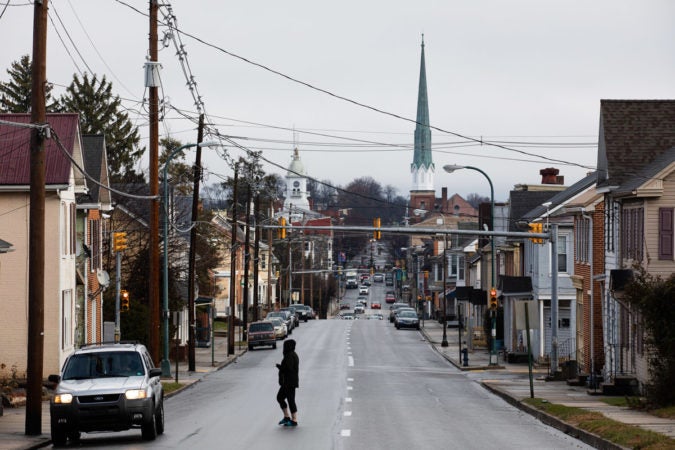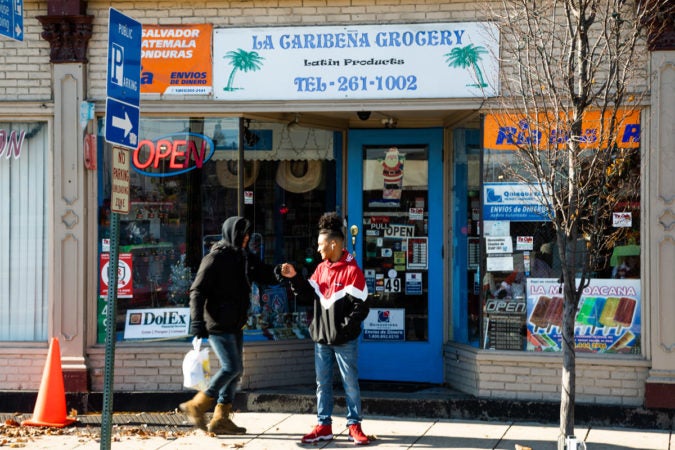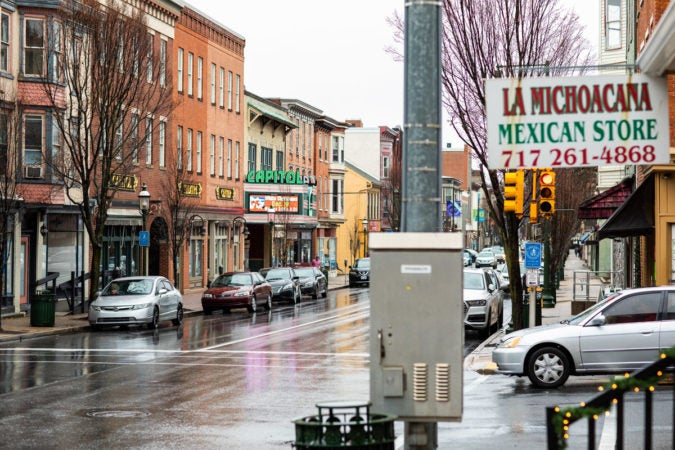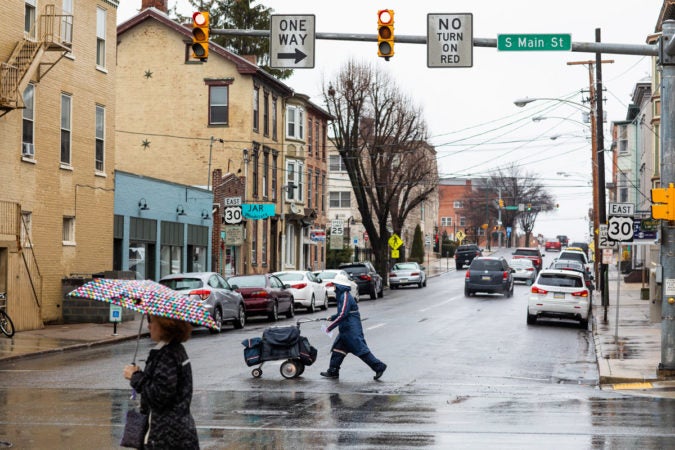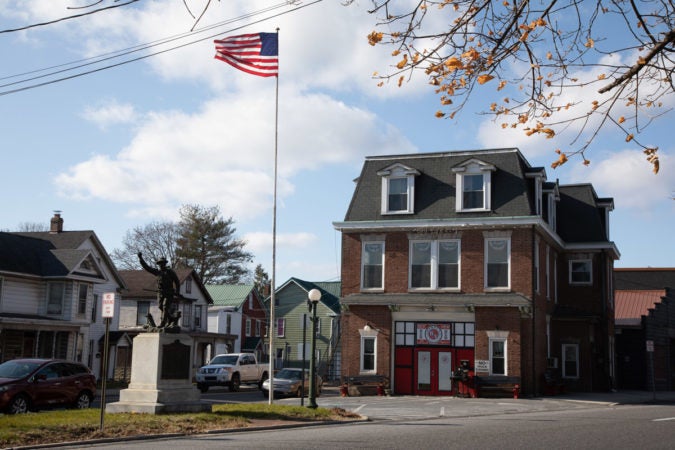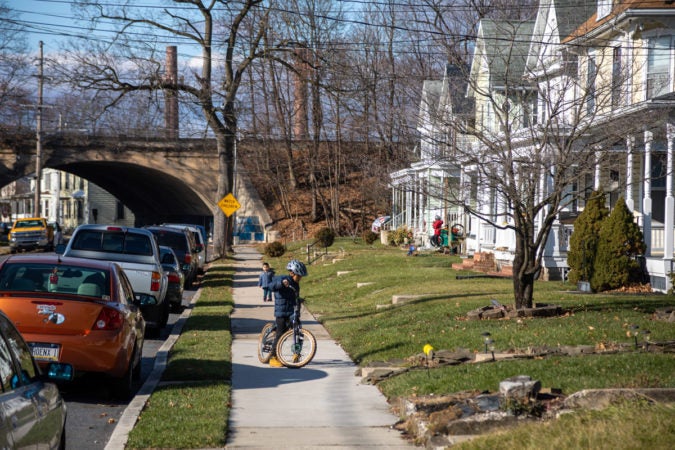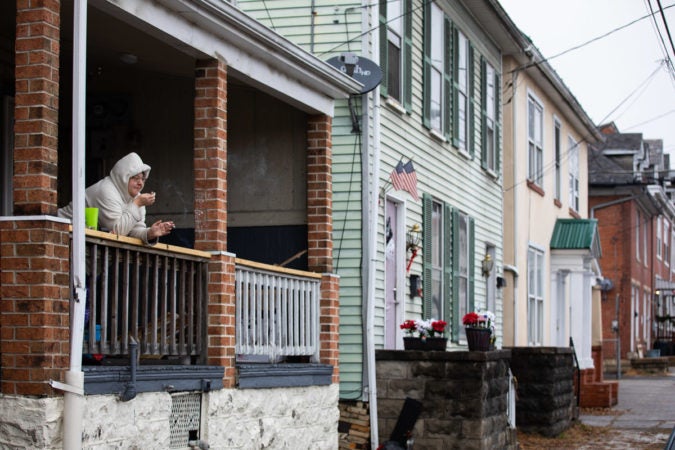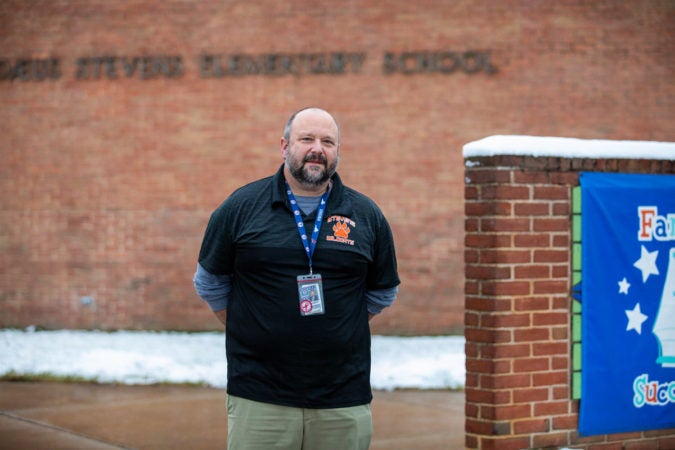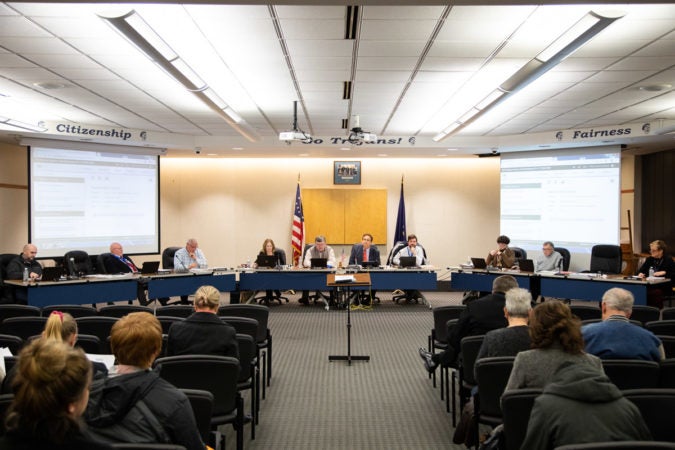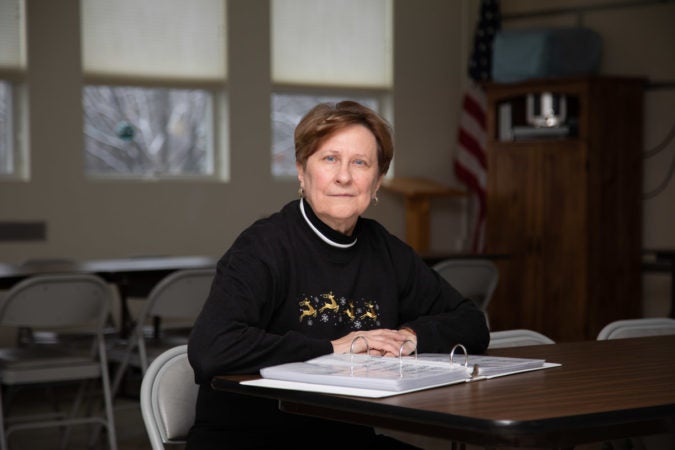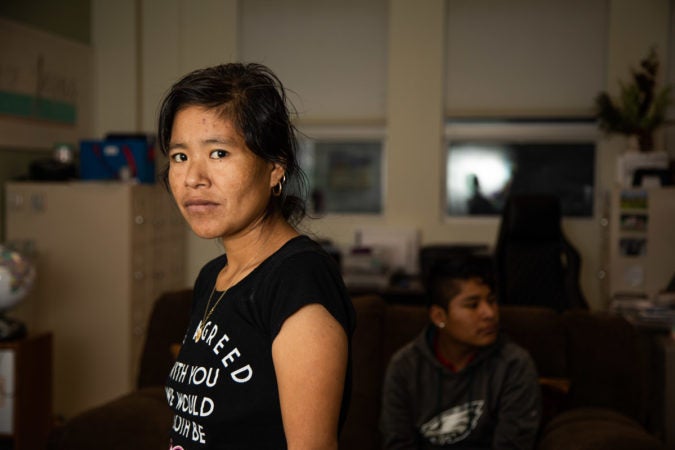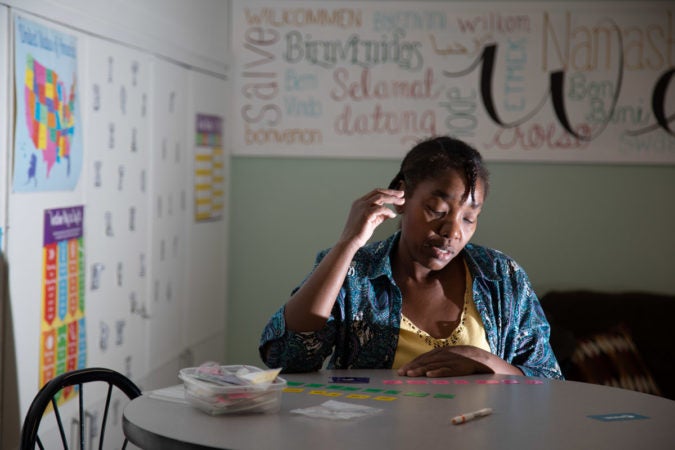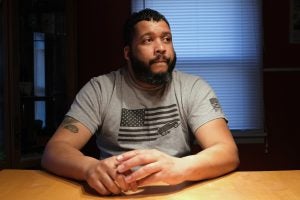Speaking Mam in MAGA country: Immigration, education and the teenage boy in the middle
Where low-wage immigrant labor undergirds the local economy, stress is put on other institutions — especially public schools, which face a mandate to educate all.
Pressure is mounting on 15-year-old Fredy Garcia Morales.
In January, he was called into a meeting with a truancy officer for his school in Chambersburg. His jaw dropped when he learned he’d missed 33 days of class.
“It surprised me a lot,” he said later, in Spanish. Fredy hadn’t realized things had gotten so bad.
The teenager initially downplayed his absences, but slowly admitted that he doesn’t like going to school in this rural, mostly white section of south central Pennsylvania.
In part, it’s because he gets lost easily in his classes, which are taught in English. Fredy speaks Spanish, but his first language is Mam, a Mayan language from his native Guatemala. When he asks for help, it can backfire.
“Sometimes, the teachers explain things and I don’t understand. When I ask something, all the students laugh and joke,” the sophomore said. This year, his grades dropped to all D’s and F’s. In English class, he had a 19.
To avoid scrutiny and embarrassment, he skips school. Sometimes, instead of class, he goes to a friend’s house to practice the electronic keyboard, which he performs in church on Sunday.
But there are bigger things on his mind than piano chords or his attendance record. His dad was recently deported. His mom has severe diabetes and can’t work. He has two little sisters, and bills for electricity and rent are piling up.
A couple of weeks after meeting with the truancy officer, he said he feels responsible for taking care of his family.
“I have to look for work,” he said.
***

Sickness and violence propelled Fredy’s family out of their home in Colotenango, a Mayan community in the mountains of western Guatemala, in 2018.
His mother, Margarita Morales Garcia, has Type 2 diabetes that is difficult to manage.
And there was the issue of their land.
One day, an armed gang threatened Fredy’s grandmother to leave the land the family farmed. The grandmother tried to flee, but was struck by a vehicle and killed.
Nearly half of the people living in Guatemala today are Maya, and they continue to live with persecution against indigenous communities dating back to colonial times. Government forces killed modern Maya residents en masse during the country’s 36-year civil war, and indigenous communities are now displaced to make way for lucrative commodity farms, their homesteads demolished and replaced with sugar or palm oil production.
Like many in the community, Fredy’s family depended on subsistence farming to live. His mother, Margarita, also wove blouses and purses for sale.
To escape further threats after the grandmother was killed, Fredy, his mom and little sisters traveled by bus to the U.S. southern border. They were caught after crossing into the United States, and put into detention before being allowed to enter the country.
Later, they applied for asylum. Due to a large backlog, they will not go before an immigration judge until April 2021.
They joined Fredy’s dad, who had crossed into the United States illegally nearly a decade earlier, in Chambersburg.
Church spires dot the landscape here in Franklin County, and the borough is flanked by farm fields. The area ranks second in the state for dairy cows, and third for fruit production. Parking lots filled with tractor-trailers hug the main highway, I-81, signs of a booming logistics sector that’s adding jobs in warehouses and distribution centers for brands like Target and Ulta. Hospitals are another big employer, as is the Letterkenny Army Depot, where the federal government repairs, builds and stores missiles and equipment.
Multiple residents described the area as fiscally responsible, and often averse to government spending. Grumbles came from conservatives and social justice advocates alike about a $74 million project to redo the county courthouse. In 2016, 71% of the county voted for President Donald Trump.
The combination of small-town warmth, affordability, and plentiful work attracts families to Franklin County from everywhere from the Washington, D.C. area to Central America, as each hopes for a quieter, safer life. Many people have deep roots in the region, but a rapidly growing number of immigrants like Fredy now call Chambersburg home.
The work of immigrants — who are often more willing to perform low-wage, manual labor jobs — undergirds the local economy. But a dependence on cheap labor puts stress on other institutions.
Public schools sit at this intersection, where the national immigration debate meets the realities of day-to-day American life. Federal law mandates that public schools serve all students equally, no matter their backgrounds, circumstances or home languages.
In practice, school districts often fall short of this goal, unprepared and slow to adapt to demographic changes in ways that would truly meet students’ needs.
“[Students] fall behind, and fall behind, and fall behind,” said Rodrigo Ortiz, an area resident working with the immigrant advocacy group MILPA. He said the Chambersburg school system allows immigrant students to pass through without holding them to high standards.
If students had more support, they might be able to attend college or find a better life, he said, rather “than only go work as a forklift driver in a factory.”
***

One in 10 people in Chambersburg today were born outside the United States. The borough is 16% Latinx and 12% Black, facts that complicate notions about an area often reduced to a monolithic idea of white, rural “Red America.”
Those changes are reflected in area schools, where the number of students learning English has more than doubled in the last decade, to 843.
As this population has grown, more students enrolling in the area’s public schools arrive with less education and lower English proficiency. Educators say getting these students up to speed takes a bigger investment of school resources.
The Chambersburg Area School District’s biggest challenge, said Superintendent Dion Betts, is “adjusting more quickly to the people who are coming.”
In response to the new demand, officials launched “newcomer” programs at Chambersburg Area Senior High and Thaddeus Stevens Elementary — intensive English-support programs meant to acclimate recently arrived students to school and supercharge their progress during their first year.
But teachers say the good those changes do is limited by a lack of funds. As the English as a Second Language population doubled, the number of ESL staff at the school district grew by only one as of the beginning of the year.
“It’s bigger class sizes, it’s juggling time,” said Jody Boardman, an ESL teacher in Chambersburg. “You’re supposed to see kids every day, and sometimes you just don’t.”
As a result, some students don’t progress. At the high school Fredy attends, only 16% of students learning English are making adequate progress on state tests. Fewer than half graduate in four years.
Test scores in Chambersburg are “not satisfactory,” said Sophia Tan, a law fellow working on behalf of immigrant students with the Education Law Center. “Where data suggests that [English learners] are not overcoming language barriers and not graduating, districts are required by law to reevaluate their programming and make changes.”
But robust ESL education is expensive. The district lags in terms of state education funding compared to its need. And locally, there’s resistance to tax increases.
“You hear comments, and so forth, that aren’t positive, like, ‘Why do we need to spend money on those kids?’” said Tom Knepper, principal of Thaddeus Stevens Elementary, where a quarter of the students are learning English.
School board vice president Kevin Mintz pointed to a shortage of teachers across the board. Staffing in the district has barely budged, he said, even as the student body has grown by 1,500 in the last decade. The pinch is often felt most by special populations in the schools, such as English learners.
“We have to help all of the kids that are there,” he said.
Superintendent Betts, who recently came to the district from Philadelphia, is trying to pitch the board on hiring one additional ESL teacher.
“It’s the area of the most significant need,” he said.
***
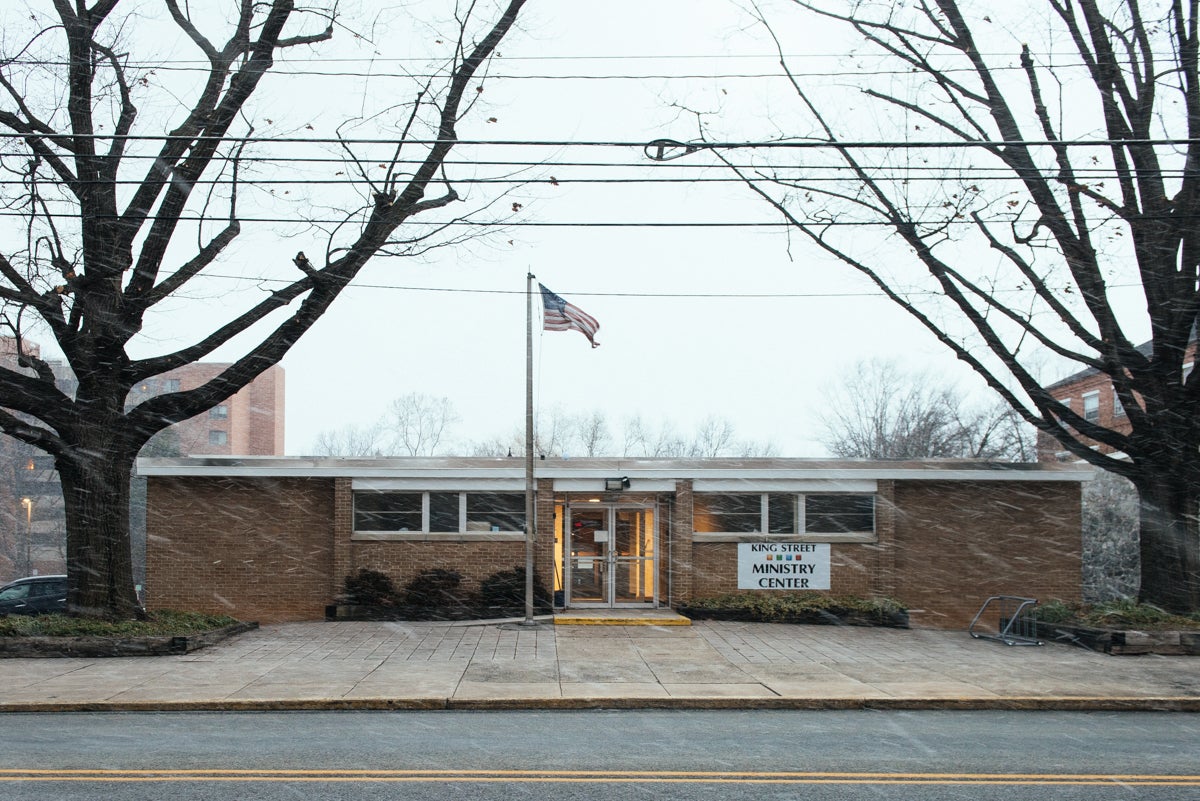
Where the work of government institutions is limited, local churches and community groups in Chambersburg pick up some of the slack.
Sue Marshall, a former literacy coach with the school district, has built up the Agape English Ministry at King Street Church as the needs of new arrivals to the borough have grown.
The church, part of the United Brethren denomination with roots in Pennsylvania’s early German-speaking communities, started its language program with two donated computers downloaded with Rosetta Stone. It’s turned into a full computer lab and free English classes every week. Around 200 local residents, mostly adults, visit each month to work on their language skills.
Marshall said they expanded into teaching literacy, and not just English, when she realized some students hadn’t learned to read in any language.
“I was running into people that were standing in line after class with their mail in their hands because they couldn’t read [it],” she said. “So I helped them go through their mail and say, ‘This you need to keep, this you can throw away.’”
Before Marshall retired from teaching, she started volunteering with her church and fulfilling its goals, such as “engage and bless our community” through English language support.
“They’re our neighbors and our friends, and we want to be able to talk to them,” she said. She’s begun learning Spanish, watching telenovelas with subtitles to practice.
In many cases, Marshall’s adult students are the parents of kids in ESL classes in the schools, learning English to be able to earn more money and to be able to keep up with their children’s lives.
Fredy Garcia Morales and his mom, Margarita, who doesn’t know how to read or write, can often be found working with tutors at the church.
Marshall has become something akin to a social worker for the family.
She helps them communicate with school officials and attorneys. She’s given them rides to doctor’s appointments. And she’s led fundraisers through the church’s charitable fund to cover some of the family’s expenses.
Fredy, who favors a Philadelphia Eagles hoodie, dotes on his mom, who sits next to him, nodding along, while he is interviewed. She interjects once, reminding him to mention his little sisters.
In Guatemala, Margarita explains, Fredy attended school through eighth grade, two years beyond what is legally mandated.
“He wants to become a policeman,” she said through a Mam translator. “I told him that’s good, keep going to school.”
For most of this school year, Fredy tried to hide his truancy from both his mom and Marshall.
At 15, he walks a line between making decisions for himself and deferring to the adults in his life. He refuses to wear his winter coat because he doesn’t think it looks cool.
But since the meeting with the truancy officer, he can’t hide from school anymore.
***

Migration to Pennsylvania’s agricultural belt is nothing new, but there have been dramatic changes in who exactly is coming that reflect larger trends at the U.S. southern border.
For decades, border crossers were primarily adult men coming to work, most often from Mexico. Now, more families are coming to the U.S. from Central America, especially from Guatemala and Honduras, and are fleeing. Where there used to be more migrant laborers, there are now parents and children, or kids traveling alone.
“They’re all ‘stay-grants’ now versus migrants,” said former Chambersburg Superintendent of Schools Joe Padasak, who retired in 2019 after 13 years in that post.
During his tenure, he acknowledged that the changes weren’t always welcomed by the community.
At graduation last year, an assistant principal at the senior high school got up to make a speech.
“She spoke five or six sentences in Spanish. I can’t tell you how many comments I got on that,” said Padasak.
He found it difficult to balance the needs of ESL students with the general need he saw in the larger school population. Often, funding decisions were made with zero sum logic.
“We need more teachers in the elementary division, so kids can read and write. But you’re taking resources from the children, the general population, to help out a smaller percentage of the [English language learner] population,” said Padasak.
He noted, though, that more funding alone won’t solve problems for students like Fredy.
“We always had a dropout problem in ninth grade. A lot of it’s cultural. Latino children, when they get to that level, a lot of times they’re out of there,” said Padasak.
Advocates for the local Latinx community say it’s not that simple. It’s not that students don’t want to finish school, but that there’s no path for them to succeed — because the nearly all-white local leadership at the school board, the county and the state hasn’t had the will to make one.
“Decisions by white people made for Hispanics are decisions for white people. There aren’t changes that really reflect the needs of the Hispanic community,” said Rodrigo Ortiz, of MILPA. He said students lose motivation and then leave school to work in landscaping and farming.
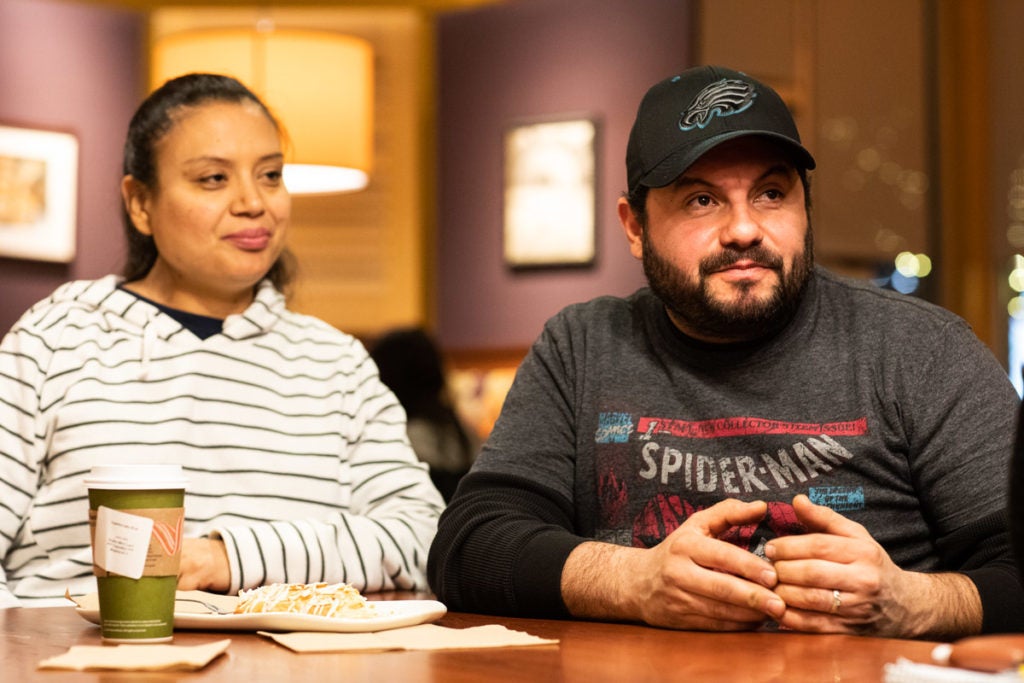
Before kids get to that point, they may have spent years drifting through classes where they feel misunderstood. On a basic level, students, peers and teachers who don’t speak the same language may mistake one another’s intentions or actions.
“Sometimes, in school, kids don’t even understand their own name when it’s pronounced in English,” said Isa del Rosario, also of MILPA, who helps parents who don’t speak English enroll their children in Chambersburg schools. “Sometimes, they react aggressively because they don’t understand what everyone else is trying to say.”
***
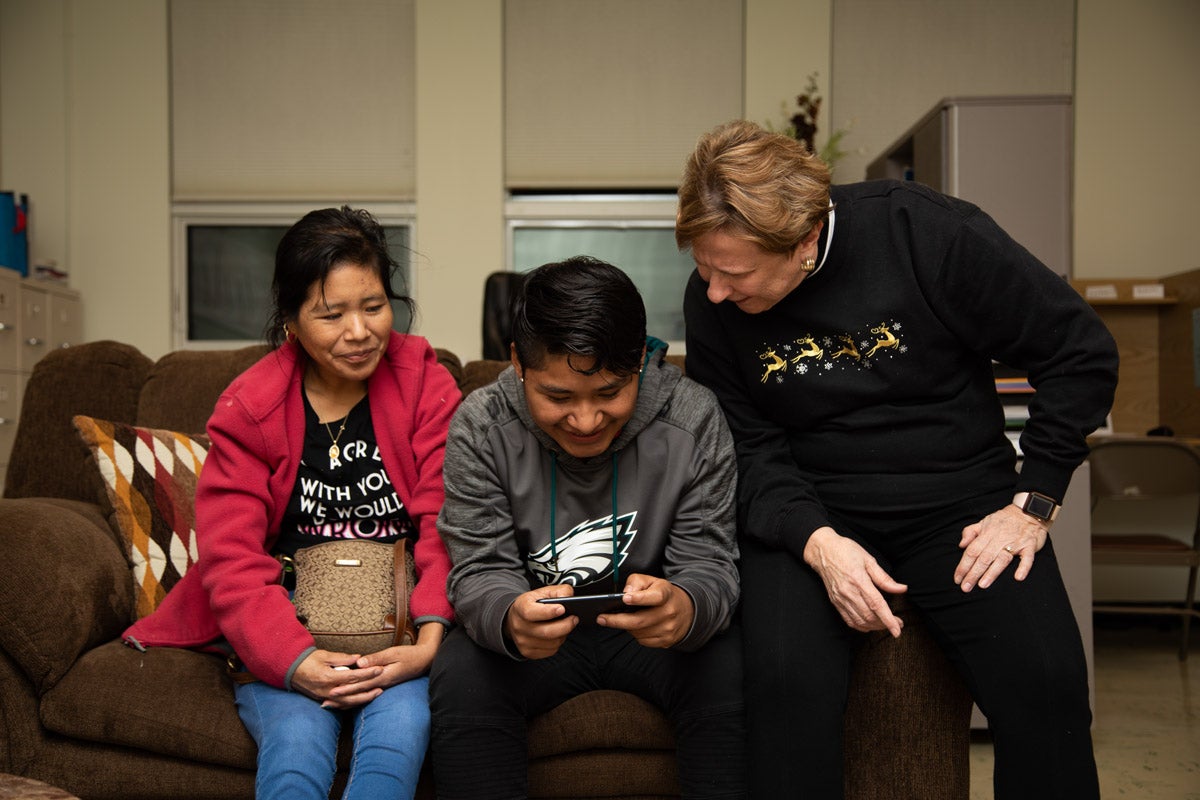
Fredy knows education can open doors for him. He thinks about having a career in America, one where he’s a proud soldier, a mechanic, or member of law enforcement. And he has learned a lot since coming to the United States, not least of which is the ability to shuttle between three languages.
On any given school day, he said, “I talk to my Guatemalan friends in Mam, and I talk to my Hispanic friends, the Hondurans, the Puerto Ricans, in Spanish, and when I go to class with my English friends, I speak English with them.”
But in terms of school success, the kind that could eventually lead to the careers he dreams of, speaking three languages conversationally doesn’t mean as much as speaking English well.
In mid-February, Fredy was called into truancy court, the next step in the school district’s intervention into his many absences. The judge didn’t issue a punishment; the formality of the proceedings had clearly already been a wake-up call. Fredy’s attendance had improved dramatically.
Everyone in his life keeps telling him to go to school, and his family is taking his truancy much more seriously. They know that if he starts skipping school again, they could be hit with fines or scrutiny from child welfare.
On Martin Luther King Jr. Day, for instance, a school holiday, Fredy had to ask Sue Marshall to explain to his mom that he didn’t have to go before she would believe him.
But the pressure on the family is far from relieved.
The bills are still piling up, and Margarita’s diabetes has landed her in the hospital with soaring blood sugar in recent weeks. Fredy now checks her glucose levels twice a day.
Even with a renewed focus on school, part of him is already planning for a future where he won’t make it to graduation. His family needs a breadwinner.
Fredy doesn’t want to work with livestock, taking care of dairy cows, as he did with his dad last summer. But maybe, he said, if a restaurant would have him, he could start earning a little money.
If that comes at the expense of his schooling — his future — Fredy said those are the kinds of sacrifices his parents made for him.
“I was thinking if I don’t finish school,” he said, “I have two little sisters … I would say to them, ‘Study! That’s how you get a good life.”
WHYY is your source for fact-based, in-depth journalism and information. As a nonprofit organization, we rely on financial support from readers like you. Please give today.



